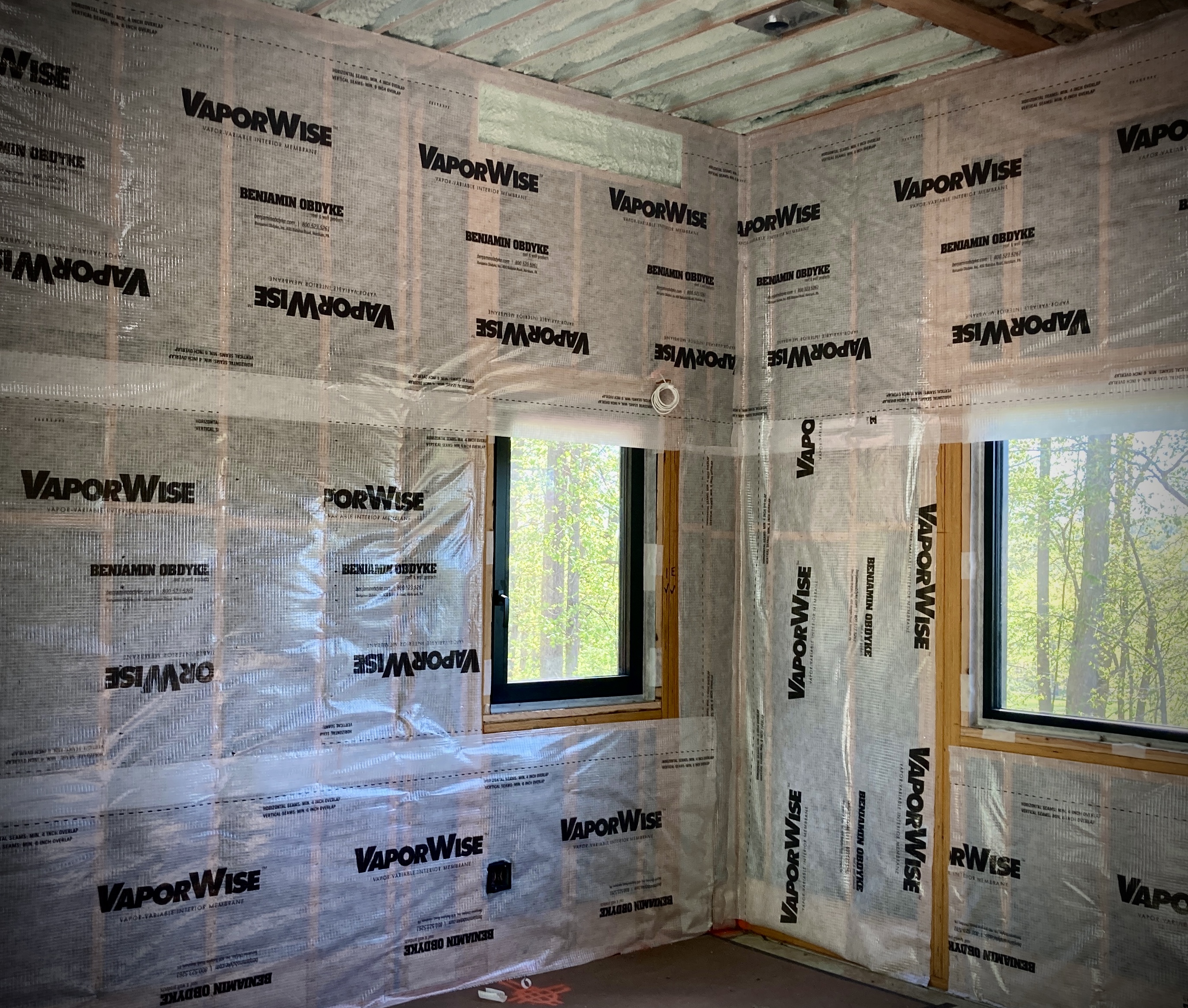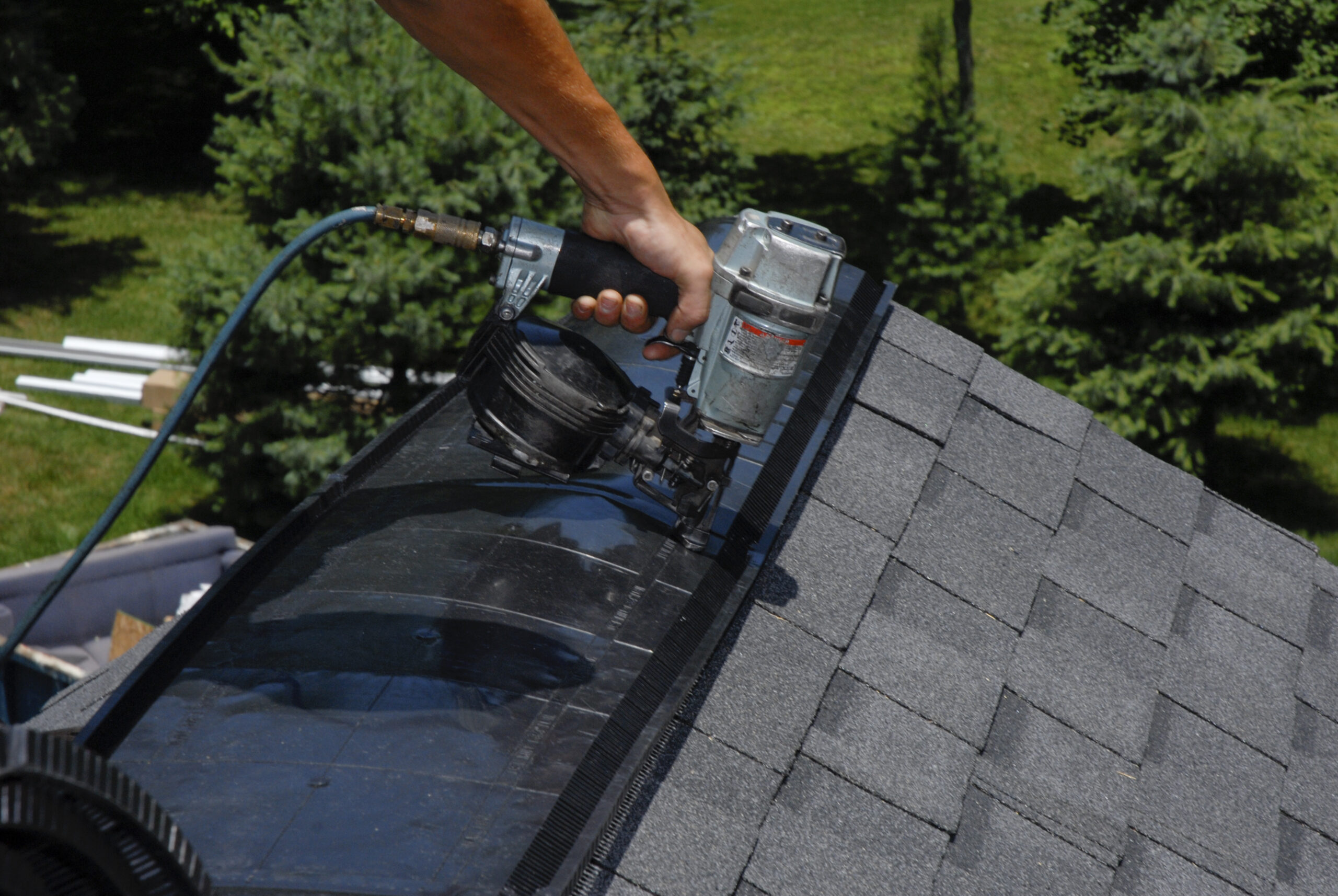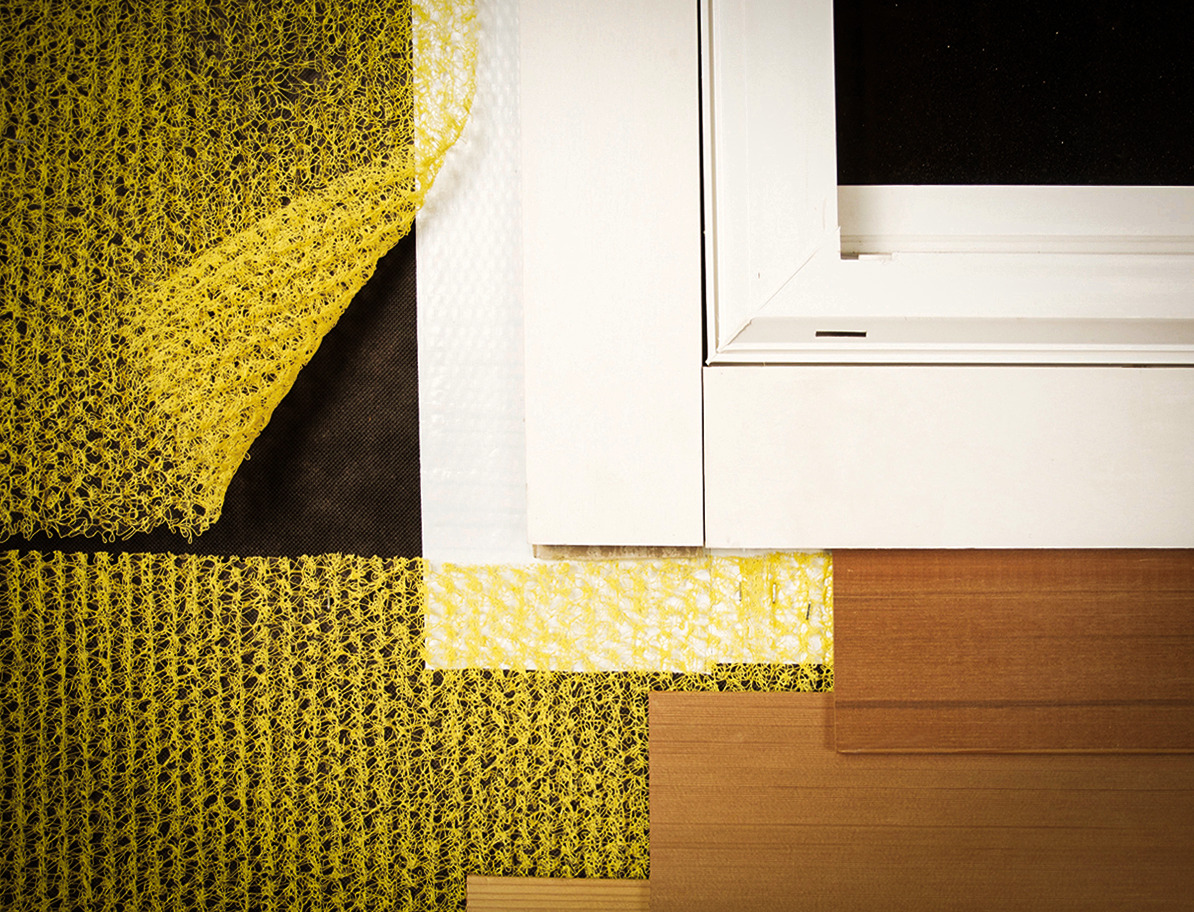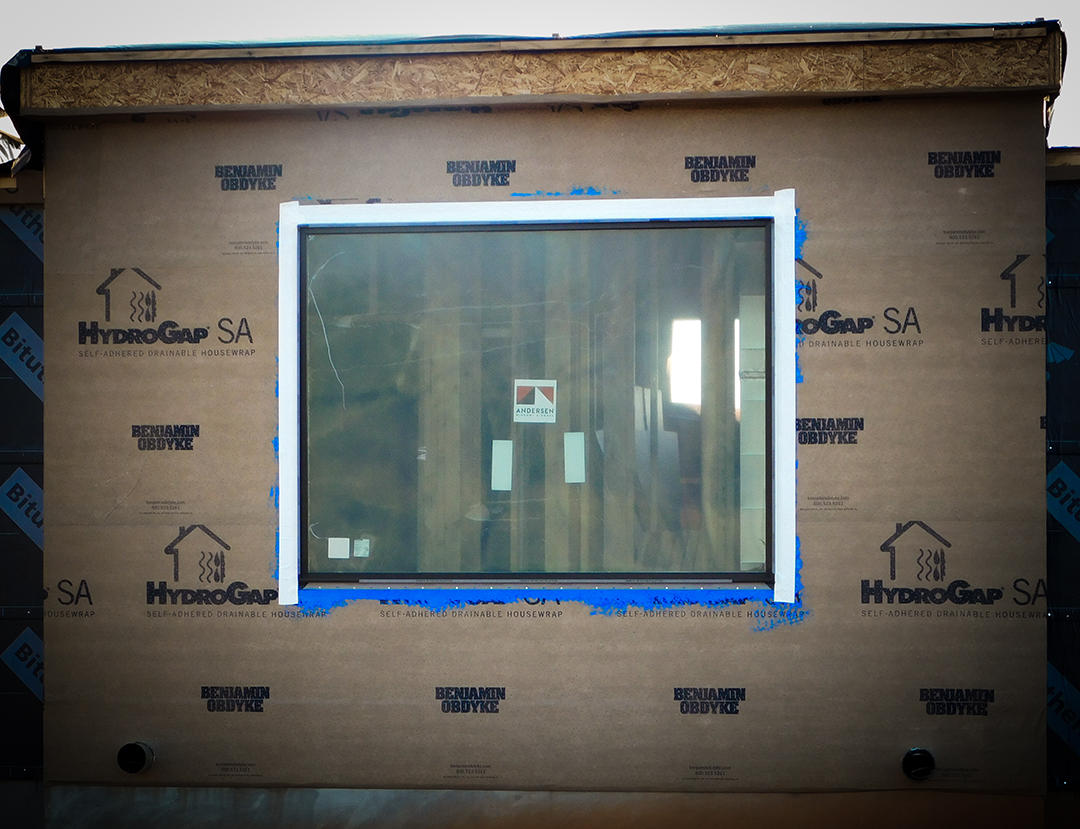When designing or constructing a building, understanding the different types of barriers—air barriers, vapor retarders, and weather-resistive barriers (WRBs, referred to in codes as “water-resistant barriers”)—is crucial. Each plays a unique role in controlling the movement of air and moisture.
Here’s a breakdown of their differences, how they interact, and why proper application matters.
What Are Building Envelope Barriers?
In building science, barriers are materials or systems used to control the movement of air, vapor, and liquid water through the envelope (walls, roof, etc.).
One material could do many different things, but it’s our job to identify which material is doing what. In the building envelope, it’s all about ensuring consistency and continuity through all four control layers (air, vapor, water, and thermal) on all sides of the building.
Air Barriers
Air barriers prevent uncontrolled air flow between the indoors and outdoors. They can be installed on the interior or exterior of the wall assembly. Multiple air barriers are acceptable—even beneficial—as they provide backup if one leaks. The more the better in this case.
Vapor Barriers
Vapor barriers, with a typical perm rating < 0.1, prevent nearly all vapor transfer. Since vapor barriers completely block moisture, it’s not as common to use them in an above-ground wall systems because we want moisture to be able to move and dry out.
Avoid Vapor Locks
One of the most critical mistakes in envelope design is creating a vapor lock—when a wall has two vapor barriers (e.g., one inside, one outside). This prevents drying in either direction if moisture gets in, increasing the risk of mold or rot.
Vapor retarders are more preferred than vapor barriers in most assemblies because they allow for drying while still controlling moisture movement.
Vapor Retarders
Vapor retarders slow vapor diffusion but allow some vapor movement; they come in a range of perm ratings > 0.1. Vapor retarders are typically installed on the interior or warm side of the building to reduce the amount of moisture that moves outside. Interior vapor retarders are required in colder regions in Climate Zones 4 and higher.
Previously, fiberglass insulation with kraft-faced paper served as a basic vapor retarder. But with advances in technology and the push for airtight assemblies, smart membranes like VaporWise are being recognized in the code because they offer more control and compatibility.
VaporWise™ Samples
GET YOUR FREE VAPORWISE™ SAMPLES TODAY
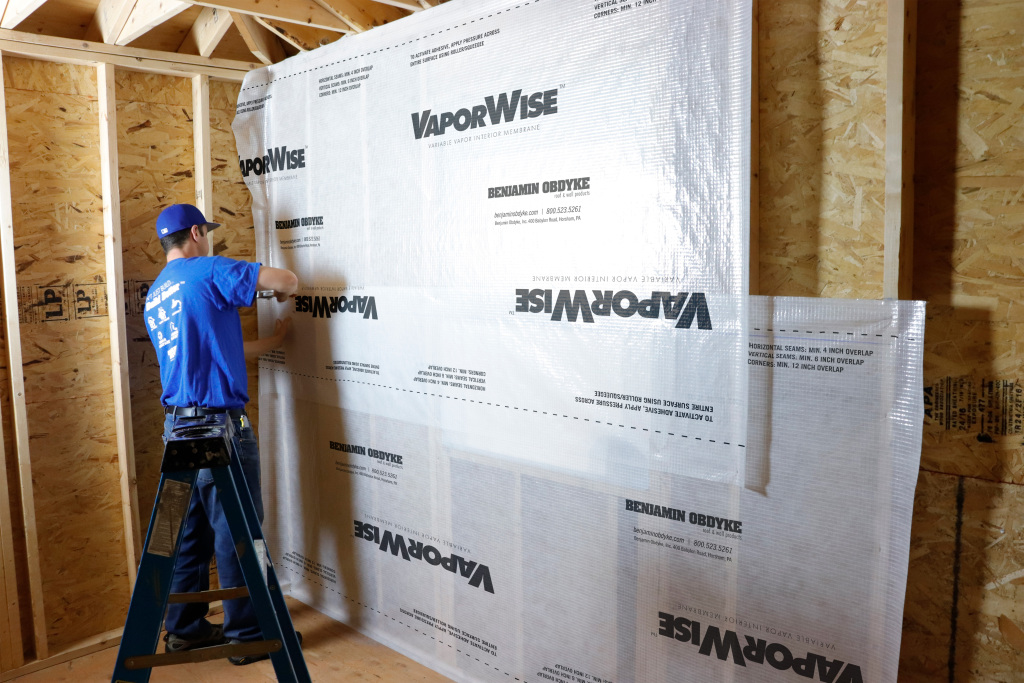
For a deeper comparison of vapor barriers and vapor retarders and when to use what, read our blog Vapor Barriers vs. Vapor Retarders.
Water-Resistant Barriers/Weather-Resistive Barriers (WRBs)
WRBs stop liquid water from entering the building while allowing water vapor to escape, helping to keep assemblies dry to avoid mold and rot. They are always on the exterior of the structure, behind the cladding. WRBs work with cladding to manage rainwater that gets past the outer surface. Explore our WRBs.
How Materials Can Serve Multiple Functions
Some materials can perform more than one function. For example, a self-adhered housewrap like HydroGap SA can act as both an air barrier and a WRB. It’s essential to understand each product’s material properties and ensure continuity across the building envelope.
As designers, architects, or builders, the goal is to assign a clear purpose to each material and ensure connection and consistency across control layers: air, vapor, water, and thermal.
Misconceptions to Avoid
The term barrier is often misused. For instance, people may refer to housewrap as a vapor barrier when it’s actually a vapor-permeable WRB. Many times, a vapor retarder is referred to as a vapor barrier, confusing the industry on what is what. It helps to clarify the purpose and goal of the element to determine the right product. Are they talking about air, vapor, or liquid control? Is the goal to stop, slow, or shed moisture?
The Importance of Control Layer Strategy
A wet towel is a good analogy for the building envelope. A wet towel dries when exposed to open air. But place it in a sealed plastic bag, and it stays damp longer and becomes musty. Your wall assembly is the same—it needs to breathe, or it will trap moisture and fail.
A high-performing building envelope needs a clearly defined and continuous air barrier, an appropriately placed vapor retarder (if needed for climate), and a robust WRB. Understanding the functions of the four control layers is critical to accomplish this, for a detailed breakdown of each layer click here.

